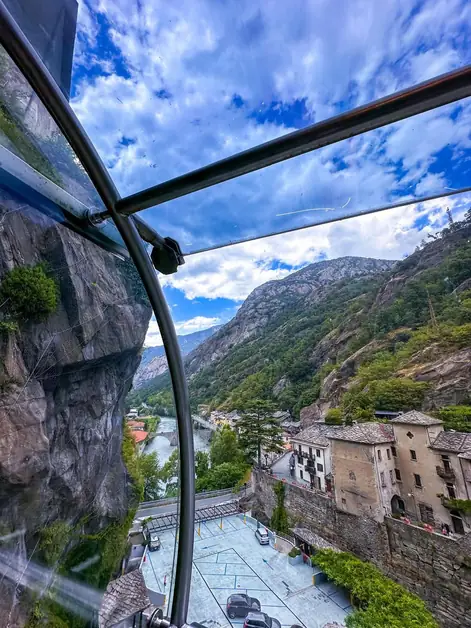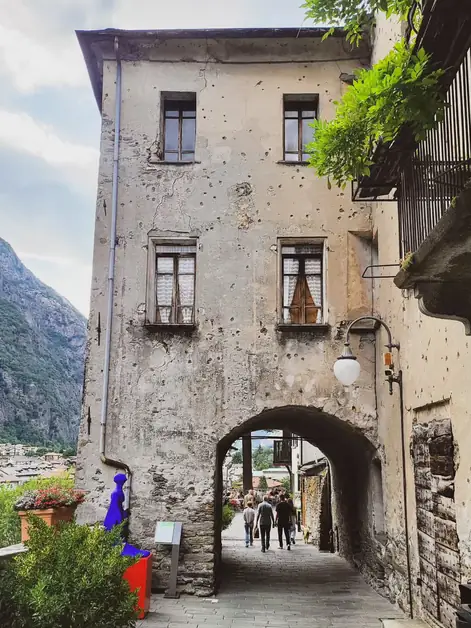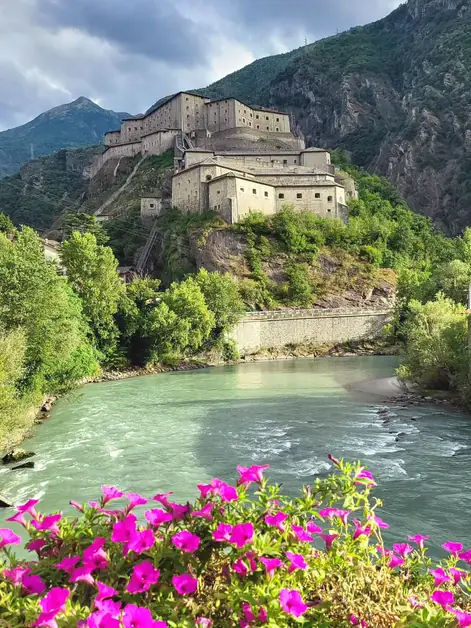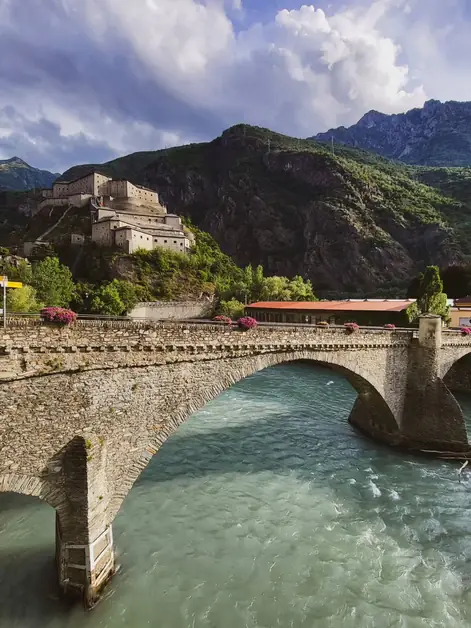Explore the Wonders of Fénis Castle
Fénis Castle offers a journey into the Middle Ages through art and history.
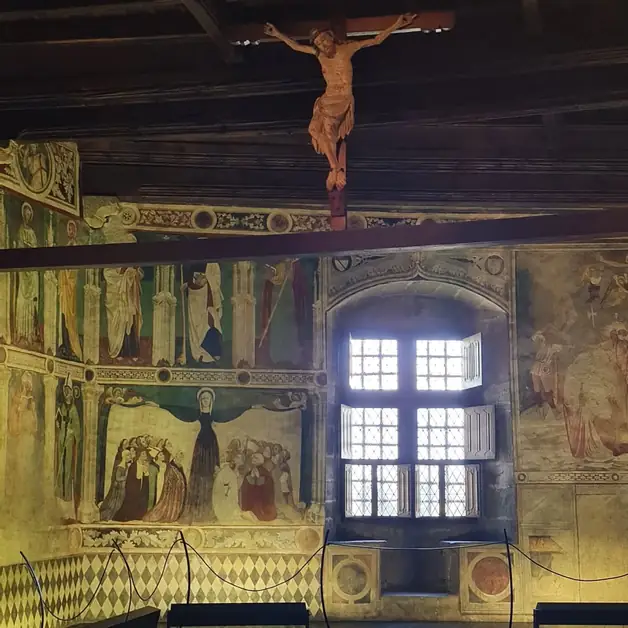
What traces of daily life can be found in Fénis Castle?
Walking through the rooms reveals environments that tell the daily life of past centuries. The large kitchen with its monumental fireplace evokes banquets and domestic work, while the courtroom reminds us of the importance of power and justice within the walls. Each space is not just an empty room: it is a fragment of life suspended in time.
What role do the frescoes play in Fénis Castle?
The frescoes are the soul of the castle. They were not intended as mere decorations, but as tools to communicate values, faith, and knowledge. In the courtyard, the painted proverbs served to teach rules of behavior, while in the chapel, the sacred scenes guided the spirituality of the inhabitants. Walking among the painted walls, it is clear that medieval art had an educational and symbolic function.
Which frescoes are most striking in the chapel?
The chapel is one of the most evocative spaces. Here lies the Madonna della Misericordia, depicted with her mantle open to welcome kneeling faithful. It is an image that conveys protection and closeness, and still strikes today for its emotional power. Surrounding her are figures of saints, each with their recognizable attributes, and religious scenes that enriched the spiritual experience of the Challant nobles.
What is the impact of the wooden crucifix in the chapel?
The crucifix hanging from the wooden beam dominates the space. Despite the simplicity of the sculpture, the suspended position and the light entering through the windows create a theatrical effect. Looking at it gives the impression that the chapel was designed to impress and evoke devotion. It is one of the details that makes the visit unforgettable.
How is light perceived inside Fénis Castle?
Light plays a fundamental role. The narrow windows protected by grates filter rays that illuminate portions of frescoes, leaving the rest in shadow. This contrast enhances the sense of mystery and intensifies the original colors, which despite the centuries still retain their expressive power. Walking from room to room, the light seems to guide the gaze, creating ever-changing scenarios.
What emotions does the frescoed courtyard evoke?
The courtyard is an open-air theater. The proverbs and painted scenes, such as Saint George facing the dragon, remind us of the connection between morality, faith, and power. It is not just about admiring ancient images: it is like reading a manual of medieval life, translated into painting. The stairs that rise along the perimeter add dynamism and allow for viewing the frescoes from different perspectives.
How important is the sensory experience during a visit to Fénis Castle?
It is not just a historical visit: it is a multisensory experience. You can smell the stone, feel the coolness of the rooms, and hear the wood creaking underfoot. Everything contributes to experiencing the authenticity of the place. You do not just look; you live it with all your senses.
What is the difference between Fénis Castle and other fortresses in the Aosta Valley?
Unlike other castles built as military strongholds, Fénis was primarily designed as a noble residence. This explains the richness of the interiors and the widespread presence of frescoes. Visiting it, one understands that the main function was not to defend, but to assert prestige and power through art and architecture.
How to get to Fénis Castle and what practical tips are there?
Those choosing to drive can follow the A5 motorway from Turin to Aosta and exit at Aosta Est, then continue towards Fénis. Parking is generally easy, although during peak season it may be useful to leave the car in the village and walk a few minutes. Those traveling by public transport can depart from Aosta with local buses: the stop is a short distance away and allows for a comfortable walk.
How much time should be dedicated to Fénis Castle?
To appreciate the interiors and linger on the frescoes, it is advisable to consider at least an hour. The guided tour lasts about 45 minutes, but it is worth staying a bit longer to revisit the details of the courtyard and observe the changing light throughout the day.
What does the artistic perspective add to the visit?
Looking at the castle solely as architecture is reductive. The artistic perspective allows us to grasp the connection between images and daily life. The frescoes become the narrating voice of a society that spoke through symbols and colors. It is as if the walls themselves were telling stories that need no words.
